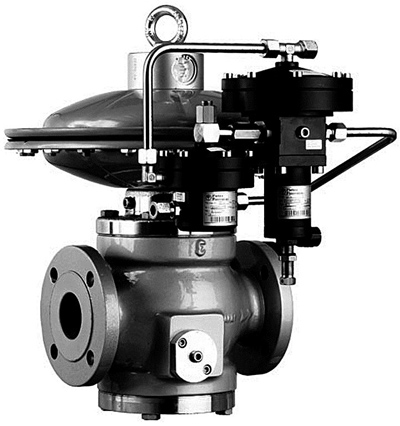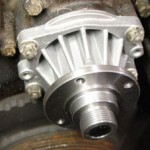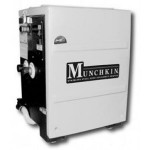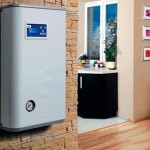Useful information about gas pressure regulators
Contents
What is the natural gas regulator?

Natural gas regulator is a valve which is intended for cuts off the flow of a liquid or a gas at a certain pressure. Regulators are used to reduce pressure and to make it safe. Its main function is to match the flow of gas and to prevent a sharp increase or decrease of pressure in the system. The gas pressure regulator low and medium pressure is used to supply domestic consumers of gas in the whole range of bandwidth.
From which parts consists natural gas regulator?
- It consists from a valve which is designed for throttling and is used to stop the flow;
- Loading element which can be provided by a weight, a spring, a piston actuator, or the diaphragm actuator in combination with a spring;
- The measuring element which is used to determine inlet and outlet flow
By its purpose they can be divided into:
- Regulators for domestic use
- Regulators for industrial use
For more details about regulators use read the following
Main function of regulators for domestic use is to provide safe use of gas in home. Usually they are designed for gas cookers, water boilers and other household gas-powered equipment.
What concerns regulators for industrial use. They are mostly designed for use in catering facilities, social services, agriculture and industry. Domestic gas regulators will help you in matters of saving money and providing a comfortable environment to stay in your home. The device of the gas pressure regulator is designed to have the opportunity to reduce the gas pressure from high to medium in the feed fuel cottages, and private homes.
What is the pressure regulator “before” and “after”
Pressure regulators “before” and “after” mainly differ in valve design and its situation. The pressure regulator “after” is necessary to maintain the desired level of pressure after the regulator. The pressure regulator “before” is necessary to maintain the desired level of pressure before regulator.
There are different kinds of gas pressure regulators
Among them such as:
- Astatic type
Such type of regulators is used for a gas network with low pressure in a large bowl.
- Static type of work
In this type of regulators the power element is replaced by a spring element actions.
- Isotony type of regulator
Nowadays they are mostly use for industrial purposes. They have the high level of productivity. And they almost don’t have any demerits. Besides, this type of regulators is the safest in use. There is practically no possibility of fire or explosion. They are widespread at gas distribution stations.
How to choose the right regulator
Firstly, you should examine carefully its main technical specification. You need to know:
- the maximum and minimum gas flow (design flow of gas);
- the absolute gas pressure before the regulator p1 and after regulator p2;
- gas density;
You should know that there are two types of regulators: regulators of indirect action with the command device and regulators of indirect action with a spring or lever-spring load. The basic criterion should be the stability of the regulator. It must provide smooth operation of the object of regulation.
If you anticipate a significant gas flow, you have to choose static regulators of indirect action. So it is possible to achieve the maximum accuracy of the gas pressure. You can apply it when you have extensive sections of the pipeline.
If, for example, we are talking about the functioning of the dead-end of the pipeline with the gas in the pipe end, the best option would be static regulators with direct action.
You should always remember if you aren’t sure in your abilities to choose the right regulator. Consult the experts. I assure you they are interested in you like in a potential client. You will save your time and yourself from the risk to buy the wrong regulator.
- popular
- new






